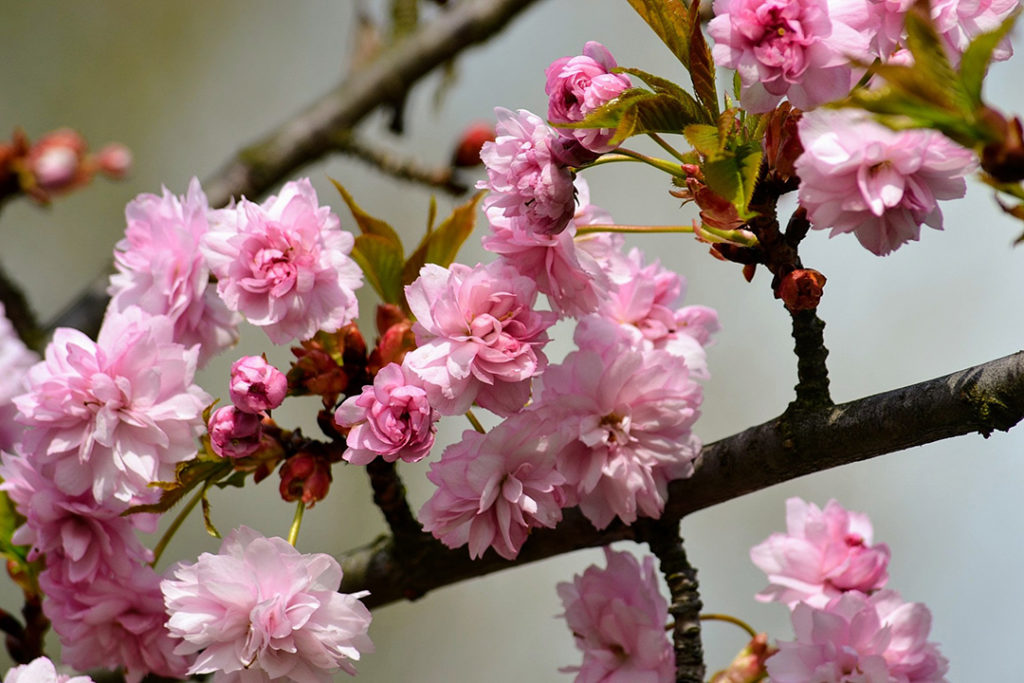
Japan
Cherry Blossom
Prunus serrulata

General Description / Cultural Significance
The cherry blossom, Prunus serrulata, is called sakura in Japan and represents the people. It is an emblem and the national flower, though not by law, only among the people. A symbol of renewal, countless poems have been written about the cherry blossom, as well as pictures painted, since ancient times. The cherry blossom represents spring because the tree blooms from the end of March into April, in cities and towns all over the country. Cherry blossom viewing parties, called Hanami, occur beneath trees, happy occasions at which friends and families gather to admire the natural beauty. Cherry blossoms are also edible, picked and used seasonally in mochi and candy, as well as popularly brewed in tea or included in cocktails. Sakura-flavored or scented products and themed items are found everywhere. Cherry wood from the tree is used in homeware and to make baskets, and a medical extract from the wood is used to heal throat and respiratory problems. Prunus serrulata is both antioxidant and soothing. The beautiful flower itself is used in weddings too, an elegant symbol of Japanese culture.
Climate Change/Conservation Status
In March 2011, a 9.1 earthquake and tsunami hit Japan, triggering the worst natural disaster to ever occur and causing nuclear power plant Fukushima to face massive damage and a release of radioactive chemicals. A series of tsunamis killed 16,000 people. These natural disasters have had devastating and lasting effects on the country.
Japan is also warming as a result of carbon emissions. Its mean annual temperature has increased by 10 degrees Celsius over the past hundred years. There are an increased number of hot days and heatwaves, placing large amounts of stress on people and on wildlife. As far as the country’s beloved cherry blossoms, they have been emerging much earlier in the year. Records chronicling the cherry blossoms blooming times date back 1,200 years ago. Ancient data sets allow for disturbing comparisons to today’s blooms, as warming temperatures wreak havoc and alter Hanami customs. In recent years, they are blooming as much as six months earlier than expected, compromising both the tree and long-held customs in Japan.
Alternate Names
Japanese cherry
Japanese flowering cherry
Sakura
Sources
Case, M., & Tidwell, A., n.d. Nippon Changes. World Wide Fund for Nature. [website]
Deck, J., 2018. Confused by Climate Change, Japan’s Famous Cherry Blossoms Bloom Six Months Early. Global Citizen. [website]
The Economist, 2017. Japan’s Cherry Blossoms are emerging increasingly early. The Economist Newspaper Limited. [website]
Eghbali, E., n.d. How to Make a Sprayable Body Lotion with Sucrose Stearate. Herb & Hedgerow. [website]
Japan Information Counselor, Japanese Consulate, for the Ambassador of the Permanent Mission of Japan to the United Nations. This statement can be found on the World Sensorium original website.
Oskin, B., 2022. Japan earthquake & tsunami of 2011: Facts and Information. Future US. [website]

